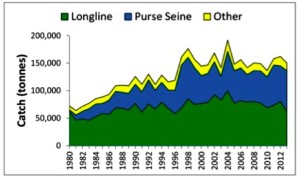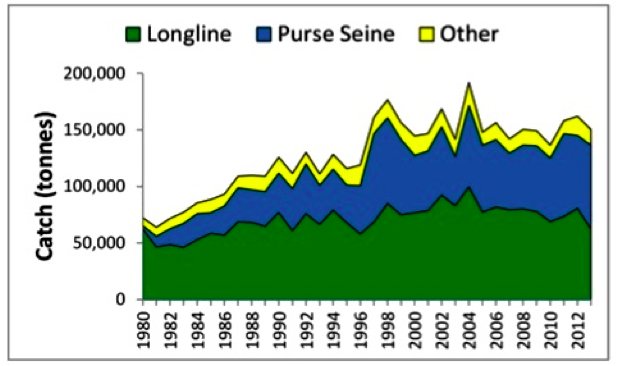
So which fishery has a greater impact on the overfished bigeye tuna stock in the Western and Central Pacific, the longline or the purse seine? The longline fleet, which targets adult bigeye, removes the most reproductive fish from the population, while the purse seine fleet, which primarily targets skipjack, incidentally catches large numbers of juvenile bigeye, limiting the stock’s reproductive capability even further.
According to the most recent Western and Central Pacific bigeye stock assessments by the Secretariat of the Pacific Community’s (SPC) Oceanic Fisheries Programme, the longliners had the greater impact early on, but have been matched in the past few years by purse seiners as the number and size of vessels have grown and the number of fish aggregating devices (FADs) they fish on has exploded.
It’s been estimated that 90 percent of the bigeye netted by purse seiners in the region has been caught by vessels setting on FADs, be they manmade or natural (i.e., whales). In 2011, the Western and Central Pacific Fisheries Commission’s (WCPFC) Scientific Committee concluded that overfishing and the increase in juvenile bigeye catches have considerably reduced the bigeye stock’s potential yield, and that maximum sustainable yield levels would increase if the mortality of juvenile bigeye was reduced. Since then, however, FAD fishing has only increased.
Last year, purse seine vessels set on FADs in the Western and Central Pacific 15,829 times, “a 3 percent increase on the 2010-2012 average sets baseline,” according to a paper the SPC submitted to WCPFC last month.
— Teresa Dawson


Leave a Reply